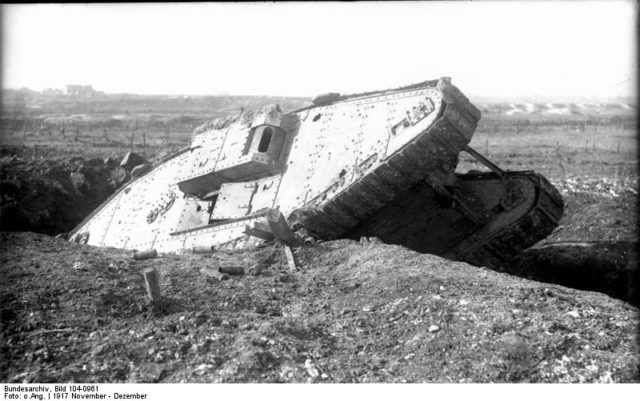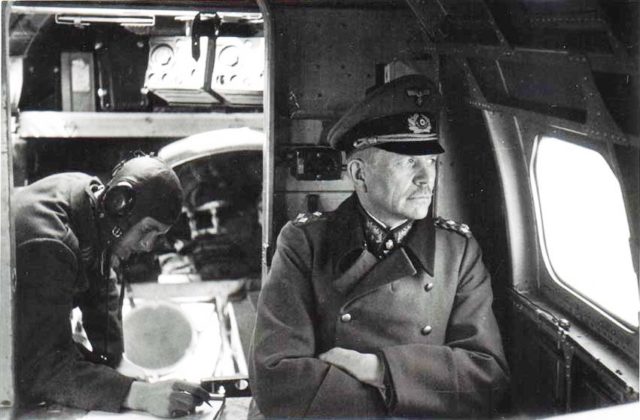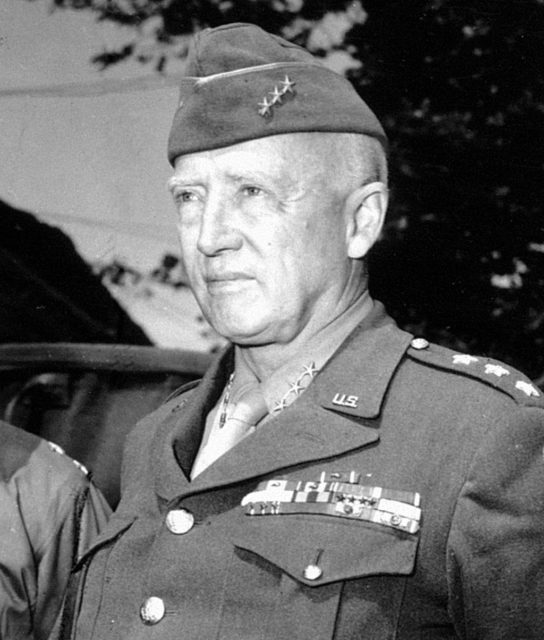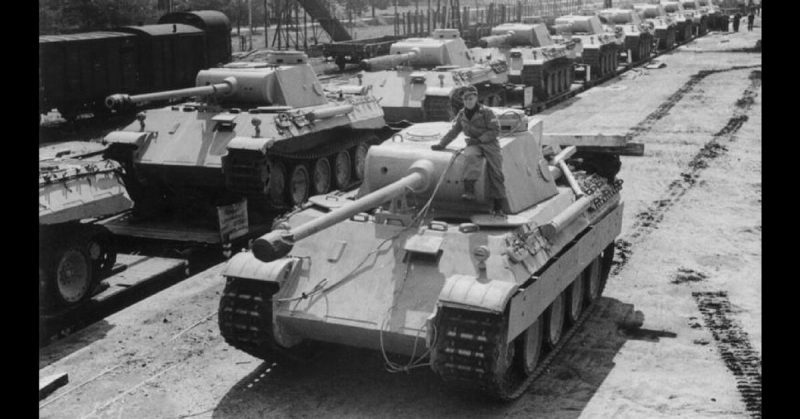In 1917, a new weapon appeared on the battlefields of WWI. First developed by the British, the tank was adopted by both sides as they tried to break the stalemate of the Western Front.
Twenty years later, as WWII approached, the tank was a standard part of every army. During WWII there were massive tank battles. The sudden appearance and swift ascent to prominence of the tank transformed the careers of several leading soldiers.
J. F. C. Fuller
A British staff officer, John Frederick Charles Fuller was with the tanks virtually from the start.
As the Tank Corps Chief of Staff, he planned the first massed tank attack in history. Launched on November 20, 1917, at Cambrai, the offense involved 378 tanks supported by six divisions of infantry. The ground was carefully chosen and the attack carefully planned. Many Germans surrendered confronted by the unprecedented armored tank. Although it did not achieve the breakthrough the generals were wanting, it did lead to the capture of ground and around 10,000 prisoners.

Fuller’s ground-breaking work with tanks made his career. He became Britain’s foremost expert on their use and the leading advocate of mechanized warfare. His ideas were influential wherever tanks were used. He was Chief Instructor at the Staff College from 1922 to 1926 and Military Assistant to the Chief of the Imperial General Staff from 1926 to 1927. His prodigious output as a military theorist and an author added to his fame and influence.
Fuller achieved so much due to the invention of tanks and to his own eccentric brilliance. However, the strong personality that had brought him success also led to his downfall. He argued with superiors, rejected opportunities, and admired both Hitler and Mussolini. He dazzled for a decade in the aftermath of Cambrai, but then as he was shuffled to the sidelines, his influence lived on.
Heinz Guderian
General Heinz Wilhelm Guderian was one of the most innovative military commanders of the 20th century and one of the men who made modern tank warfare.
A German staff officer in WWI, Guderian saw the effect of British tanks as they drove back the Germans. It determined the course of his career, as he decided to work with the devastating new machines.
In the years after the war, Guderian helped rebuild the German military within the limits of the Versailles agreement. His focus was on tanks. He studied theorists such as Fuller and cooperated with the Russians and Swedes in experimenting with tank tactics. He used his experience in the signals service to develop secure radio communication between vehicles, vastly improving battlefield coordination.

Guderian’s success with tanks ensured his rise through the ranks. Tanks were exactly the sort of offensive weapon that the aggressively-minded Nazis embraced. Guderian became one of Hitler’s leading generals and one of the very few men who could openly argue with the Fuhrer.
Guderian led tanks in the occupation of Czechoslovakia and Poland. In France, his swift advance isolated the British at Dunkirk. In Russia, he made such decisive advances that one of his opponents was executed for his failures.
Disagreements with Hitler meant Guderian lost his prominent position, only to be restored because of his undoubted skill. Following one final row, he went on sick leave, joined a Panzer unit, and was captured by the Americans doing what he loved best – commanding tanks.
George Patton
Patton was one of the greatest and most troublesome American commanders of WWII.
A dedicated cavalry officer, he commanded General Pershing’s headquarters staff in WWI. There he discovered tanks, which he grew to love even more than mounted combat. He visited the French tank school, set up the first US tank unit, and was wounded in action while leading a tank brigade.
Between the wars, Patton developed his skills as a tank commander and his reputation as a flamboyant tough guy. A charismatic Francophile with a gift for tank command, he was a natural choice to lead American forces going into North Africa in WWII. There, tanks were vital and French concerns had to be appeased.

Despite clashing with his British colleagues, Patton proved a bold and successful commander. After Africa, he led American troops in the invasion of Italy.
The Germans feared Patton so much they believed in a fictional army he was supposed to lead in the build up to D-Day. He then took command of a real tank army that made swift advances across France and into Germany, smashing German industrial plants. He also played a vital part in stopping the German counterattack in the Ardennes.
Like Fuller, Patton lost status due to his strong personality and the offense he caused Russian officers at a victory party. His career might have recovered had he not died following a car crash in December 1945.
Sepp Dietrich
Josef “Sepp” Dietrich served as a gunner in a captured tank late in WWI. There, he earned a Bavarian Military Service Cross for destroying his tank rather than letting it fall into Allied hands.
Between the wars, he served in the police and paramilitaries before joining the SS. Given command of an infantry force, he pushed it toward motorization. He had experienced the power of military vehicles first hand and wanted more.
In WWII, he proved to be an inspiring commander. He won multiple medals and the gratitude of his men. He was put in charge of an SS Panzer Corps was it was formed in 1942. Then in 1944 when a full SS Panzer Army was created, he was again given the command.
In December 1944, Dietrich was tasked with spearheading Hitler’s counterattack through the Ardennes. He could tell it would be a disaster. The supplies, terrain and state of the soldiers were all inadequate. He still did his duty and took blame for the failure. He then continued to command tank forces in the retreat across Germany up to the end of the war.
Sources:
David Chandler and Ian Beckett (Eds) (1994), The Oxford History of the British Army
John Keegan and Richard Holmes (1985), Soldiers
James Lucas (1996), Hitler’s Enforcers: Leaders of the German War Machine 1939-1945
David Rooney (1999), Military Mavericks: Extraordinary Men of Battle
